Today Current Affairs: 16th August 2021 for UPSC IAS exams, State PSC exams, SSC CGL, State SSC, RRB, Railways, Banking Exam & IBPS, etc
Table of Contents
Import Of Crushed Genetically Modified (GM) Soybean:
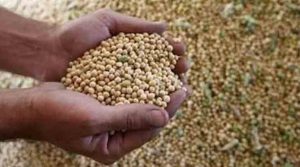
The Union government has decided to allow the import of crushed genetically modified (GM) soybean, which is a major ingredient of poultry feed.
- The poultry industry has been crushed by multiple disasters over the last year and a half.
- In January 2020, a false rumour that COVID-19 could be spread by eating chicken meat led to a crash in demand.
- A year later, avian flu cases led to another crash, followed by a crippling rise in the prices of poultry feed.
- Besides, over the last three to four years, soy meal has been available at an average cost of ₹34 to 36/kg. This month, it shot up to ₹96/kg (Soy meal is the main protein ingredient in the feed).
- Environmental activists have raised concerns about the permission given for something derived from a genetically modified plant to enter the human food chain, given that India’s regulatory system has yet to approve GM foods.
- Besides, the 1989 rules of the Environment Protection Act applied not just to GM organisms, but also products and substances thereof.
- A GM or transgenic crop is a plant that has a novel combination of genetic material obtained through the use of modern biotechnology.
- GM crop can contain a gene(s) that has been artificially inserted instead of the plant acquiring it through pollination.
- The Genetic Engineering Appraisal Committee (GEAC) is the apex body that allows for commercial release of GM crops.
- Use of the unapproved GM variant can attract a jail term of 5 years and fine of Rs. 1 lakh under the Environment Protection Act, 1986.
- Food Safety and Standards Authority of India (FSSAI) is the authorised body to regulate the imported crops in India.
- India allows the import of GM soybean and canola oil. Import of GM soya bean seeds was so far not approved in India.
IPCC Released Its Sixth Assessment Report “Climate Change 2021: The Physical Science:

IPCC released its Sixth Assessment Report “Climate Change 2021: The Physical Science”.
- Several Indian Scientists have participated in the preparation of this report.
- The Sixth Assessment Report (AR6) of the United Nations Intergovernmental Panel on Climate Change (IPCC) is the sixth in a series of reports intended to assess scientific, technical, and socio-economic information concerning climate change.
- This report evaluates the physical science of climate change – looking at the past, present, and future climate.
- It reveals how human-caused emissions are altering our planet and what that means for our collective future.
Highlights of Sixth Assessment Report (AR6):
- Weather and climate events – such as extreme heat, heavy rainfall, fire conditions, and droughts – are becoming more severe and frequent because of climate change.
- The report finds we are already edging closer to a 1.5 degrees Celsius warmer world, and every day emissions rise the prospects for averting the worst impacts of climate change become dimmer.
- Carbon dioxide has been and will continue to be the dominant cause of global warming under all greenhouse gas emissions scenarios.
- It says, if greenhouse gas emissions are halved by 2030 and net zero by 2050, global warming can be stopped.
- Also, IPCC report vindicates India’s position that historical cumulative emissions are the source of the climate crisis that the World faces today.
- The report highlights that our climate is rapidly changing due to human influence and is already altering our planet in drastic ways –
- Arctic Sea ice is at its lowest level in more than 150 years;
- Sea levels are rising faster than at any time in at least the last 3,000 years; and
- Glaciers are declining at a rate unprecedented in at least 2,000 years.
Prime Ministers Shram Awards:

The Government of India has announced the Prime Minister’s Shram Awards (PMSA) for the year 2018.
- This year the Awards are given in three categories namely:\
- Shram Bhushan Awards which carry a cash prize of Rs.1,00,000/- each,
- Shram Vir/Shram Veerangana Awards which carry a cash prize of Rs. 60,000/- each and
- Shram Shree/Shram Devi Awards which carry a cash prize of Rs.40,000/- each.
About the Awards:
- The objective of the Prime Ministers Shram Awards is to recognize the outstanding contributions made by workmen in organizations both in public and private sector.
- The Awards will be presented to the workmen as defined in the Industrial Disputes Act, 1947 and employed in the Departmental Undertakings of the Central and State Governments, Central and State Public Sector Undertakings as also private sector and having minimum of 500 employees on roll.
- Eligibility:
- These awards are given to the workmen, who have distinguished record of performance, devotion to duty of a high order, specific contribution in the field of productivity, proven innovative abilities, presence of mind and exceptional courage.
- These are also given to the workmen who have made supreme sacrifice of laying down their lives in the conscientious discharge of their duties.
- Workmen solely engaged in routine service duties would not be eligible.
Four New Ramsar Sites: India’s Wetlands:

Four more Indian sites – two each from Haryana and Gujarat – have been recognised as wetlands of international importance under the Ramsar Convention.
- Further, according to recent estimates by Wetlands International South Asia, nearly 30% of the natural wetlands in India have been lost in the last three decades. Majorly, the loss of Wetlands is more prominent in Urban areas.
- Wetlands International South Asia was established in 1996, with an office in New Delhi, as a part of Wetlands International network to promote conservation and sustainable development of wetlands in the South Asia region.
About Wetlands:
- Wetlands are ecosystems saturated with water, either seasonally or permanently.
- They include mangroves, marshes, rivers, lakes, deltas, floodplains and flooded forests, rice-fields, coral reefs, marine areas no deeper than 6 metres at low tide, as well as human-made wetlands such as waste-water treatment ponds and reservoirs.
- Though they cover only around 6% of the Earth’s land surface, 40% of all plant and animal species live or breed in wetlands.
New Ramsar Sites:
- Recently, the Ramsar Convention has designated four new wetlands in India, as wetlands of global importance. It is an international treaty for the conservation and wise use of wetlands.
- Bhindawas Wildlife Sanctuary, the largest wetland in Haryana is a human-made freshwater wetland.
- Sultanpur National Park from Haryana supports more than 220 species of resident, winter migratory and local migratory waterbirds at critical stages of their life cycles.
- Thol Lake Wildlife Sanctuary in Gujarat lies on the Central Asian Flyway and more than 320 bird species can be found here.
- Wadhwana Wetland from Gujarat is internationally important for its birdlife as it provides wintering ground to migratory waterbirds, including over 80 species that migrate on the Central Asian Flyway.
- These wetlands are home to endangered bird species like Egyptian Vulture, Saker Falcon, Sociable Lapwing, and the near threatened Dalmatian Pelican.
- With this, the number of Ramsar sites in India are 46.
Atmanirbhar Narishakti Se Samvad:
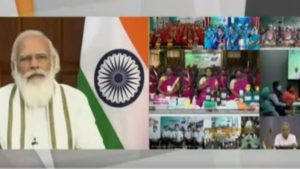
Prime Minister (PM) of India participated in ‘Atmanirbhar Narishakti se Samvad’ and interacted with women Self Help Group (SHG) members promoted under the Deendayal Antyodaya Yojana-National Rural Livelihoods Mission (DAY-NRLM).
Highlights of the Conference:
- The PM lauded the Self-Help Groups of women for their unprecedented services during the Covid-19 period.
- For example, women’s unparalleled contribution in making masks and sanitizers and providing food to the needy and spreading awareness.
- The PM released support funds to SHGs, for PM Formalisation of Micro Food Processing Enterprises (PM FME) Scheme and for Farmer Producer Organizations (FPOs).
- The PM also announced that now the limit for loans available to SHGs without guarantee has been doubled to Rs 20 lakh.
- In the pursuit of making the country free from single use plastic, SHGs can play an important role.
- SHGs can raise awareness about single use plastic and work for its alternative.
- In this context, SHGs can take full advantage of the online Government e-marketplace.
About Self-Help Groups (SHGs):
- SHGs are informal associations of people who choose to come together to find ways to improve their living conditions.
- It can be defined as a self governed, peer controlled information group of people with similar socio-economic background and having a desire to collectively perform common purpose.
- Villages face numerous problems related to poverty, illiteracy, lack of skills, lack of formal credit etc. These problems cannot be tackled at an individual level and need collective efforts.
- Thus SHG can become a vehicle of change for the poor and marginalized. SHG relies on the notion of “Self Help” to encourage self-employment and poverty alleviation.
- In 1999, Government of India, introduced Swarn Jayanti Gram Swarozgar Yojana (SGSY) to promote self-employment in rural areas through formation and skilling of SHGs. The programme evolved as a national movement in 2011 and became National Rural Livelihoods Mission (NRLM).
Greater Adjutant Storks (Garuda):
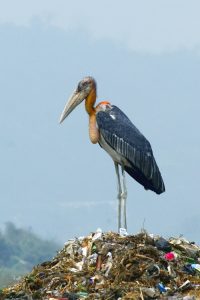
Bihar has decided to tag greater adjutant storks locally known as ‘Garuda’ with GPS trackers to monitor their movement as part of efforts to conserve them.
- Scientific Name: Leptoptilos dubius
- Genus: The greater adjutant is a member of the stork family, Ciconiidae.
- There are about 20 species in the family.
- They are long-necked large birds.
- Habitat:
- Once found across South and Southeast Asia, the Greater Adjutant is one of the most threatened stork species in the world.
- There are only three known breeding grounds – one in Cambodia and two in India (Assam and Bihar).
- Threat:
- The widespread destruction and degradation of the wetlands that this scavenger bird needs to forage (i.e. search for food) and the loss of its nesting trees, led to a decline.
- Protection Status:
- IUCN Red List: Endangered
- Wildlife (Protection) Act 1972: Schedule IV
Ayushman Bharat Pradhan Mantri Jan Arogya Yojana (AB-PMJAY):
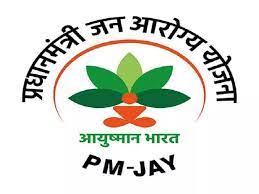
Under the Ayushman Bharat Pradhan Mantri Jan Arogya Yojana (AB-PMJAY), the Union government’s health insurance scheme, approximately 20.32 lakh COVID-19 tests and 7.08 lakh treatments were authorised from April 2020 to July 2021.
- The total value of the tests and treatment stood at ₹2,794 crore.
Key Features of PM-JAY:
- The world’s largest health insurance/ assurance scheme fully financed by the government.
- It provides cover of 5 lakhs per family per year, for secondary and tertiary care hospitalization across public and private empaneled hospitals in India.
- Coverage: Over 10.74 crore poor and vulnerable entitled families (approximately 50 crore beneficiaries) are eligible for these benefits.
- Provides cashless access to health care services for the beneficiary at the point of service.
- The National Health Authority (NHA) is the nodal agency responsible for the nationwide roll-out and implementation of the AB-PMJAY scheme.
- This scheme is a Centrally sponsored scheme with some Central sector components.
- As per the latest economic survey:The Pradhan Mantri Jan Arogya Yojana (PM-JAY) contributed to improvement in many health outcomes in States that implemented the programme.
- States that joined the PM-JAY, compared to those that did not, experienced greater penetration of health insurance, reduction in infant and child mortality rates, realised improved access and utilisation of family planning services and greater awareness of HIV/AIDS.
- Across all the States, the proportion of households with health insurance increased by 54% for States that implemented PM-JAY while falling by 10% in States that did not.
Southeast Asia Cooperation And Training (SEACAT):
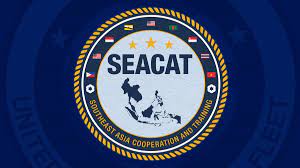
The Indian Navy demonstrated its maritime maneuvers in U.S. Navy-led Southeast Asia Cooperation and Training (SEACAT) military exercise in Singapore.
- The military exercise also included navies of 20 other partner nations as well.
- The maritime exercise aimed to foster enhanced cooperation between Southeast Asian countries by incorporating tactics, standardized training, and procedures to combat contingencies or illegal activities in the maritime domain.
- Notably, the exercise featured a maritime operations center based out of the International Fusion Centre in Singapore, which will serve as a centralised hub for crisis coordination and information sharing of suspicious vessels during the simulation.
- SEACAT began in 2002 as “Southeast Asia Cooperation Against Terrorism” and this is the 20th iteration of the exercise.
- In 2020, the event was conducted as part of a virtual symposium amid the COVID-19 pandemic.
Open Network For Digital Commerce (ONDC):

The Union Minister of Commerce & Industry chaired a meeting for the review of the Open Network for Digital Commerce (ONDC) initiative of Department for Promotion of Industry and Internal Trade (DPIIT).
- ONDC is globally first-of-its-kind initiative that aims to democratise Digital Commerce, moving it from a platform-centric model to an open-network.
- As UPI is to the digital payment domain, ONDC is to e-commerce in India.
- ONDC will enable, buyers and sellers to be digitally visible and transact through an open network. no matter what platform/application they use.
- ONDC will empower merchants and consumers by breaking silos to form a single network to drive innovation and scale, transforming all businesses from retail goods, food to mobility
- ONDC will be compliant with the Information Technology Act, 2000 and designed for compliance with the emerging Personal Data Protection Bill.
The Vehicle Scrappage Policy:

Prime Minister Narendra Modi launched the vehicle scrappage policy with an aim to phase out old and unfit vehicles in an environment-friendly manner. The goal for 21st century India to be Clean, Congestion Free & Convenient Mobility, is the need of the hour,” Modi said.
- As per law, a registration certificate for a passenger vehicle is valid for 15 years from date of issue. For a commercial vehicle, it is valid for a period of 10 years.
- The scrappage policy will come into effect after the expiry of this 10 or 15 year period. The vehicle will then have to undergo a mandatory fitness test.
- As per the motor vehicle law, renewal of fitness certificate annually is mandatory for a commercial vehicle once it is older than eight years. For the first eight years, such vehicles will need to undergo the test after every two years.
- If a vehicle passes the fitness test then it will have to repeat the same after every 5 years to keep a check. A valid fitness certificate will be necessary for renewal of registration certificates after 15 years. The renewed certificate will be issued for a period of 5 years in case of private vehicles.
Incentives for scrapping old vehicles:
- Firstly, owners of such vehicles will get a scrap value which will be equivalent to 4 per cent to 6 per cent of the ex-showroom price of the new vehicle that they would be purchasing.
- Secondly, there will be zero registration fees for new vehicle purchased if the owner shows a certificate of deposit.
- Thirdly, state governments have been asked to offer concessions on motor vehicle tax. The concessions include up to 25 per cent for non-transport vehicles and up to 15 per cent for transport vehicles.
- Fourthly, vehicle manufacturers have been advised to provide 5 per cent discount on purchase of new vehicle against certificate of deposit.
Electric Vehicles:

NITI Aayog has released a handbook to guide state governments and local bodies to frame policies and norms towards setting up charging networks for electric vehicles.
- The Handbook for Electric Vehicle Charging Infrastructure Implementation” has been jointly developed by NITI Aayog, Ministry of Power, Department of Science and Technology, Bureau of Energy Efficiency, and World Resources Institute India.
- The Handbook provides a systematic and a holistic approach for adoptions by implementing authorities and other stakeholders involved in planning, authorisation and execution of electric vehicles charging infrastructure.
- The objective is to enhance charging infrastructure and facilitate a rapid transition to electric mobility in the country.
Plastic Waste Management Amendment Rules, 2021:
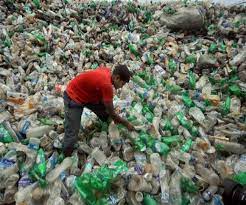
Union Ministry of Environment has notified the Plastic Waste Management Amendment Rules, 2021, which prohibits identified single use plastic items which have low utility and high littering potential by 2022.
- In the 4th United Nations Environment Assembly held in 2019, India had piloted a resolution on addressing single-use plastic products pollution, recognizing the urgent need for the global community to focus on this very important issue.
- The manufacture, import, stocking, distribution, sale and use of following single-use plastic, including polystyrene and expanded polystyrene, commodities shall be prohibited with effect from the 1st July, 2022:
- ear buds with plastic sticks, plastic sticks for balloons, plastic flags, candy sticks, ice-cream sticks, polystyrene [Thermocol] for decoration;
- plates, cups, glasses, cutlery such as forks, spoons, knives, straw, trays, wrapping or packing films around sweet boxes, invitation cards, and cigarette packets, plastic or PVC banners less than 100 micron, stirrers.
- In order to stop littering due to light weight plastic carry bags, with effect from 30th September, 2021, the thickness of plastic carry bags has been increased from fifty microns to seventy five microns and to one hundred and twenty microns with effect from the 31st December, 2022.
- The plastic packaging waste, which is not covered under the phase out of identified single use plastic items, shall be collected and managed in an environmentally sustainable way through the Extended Producer Responsibility of the Producer, importer and Brand owner (PIBO), as per Plastic Waste Management Rules, 2016.
- For effective implementation of Extended Producer Responsibility the Guidelines for Extended Producer Responsibility being brought out have been given legal force through Plastic Waste Management Amendment Rules, 2021.




